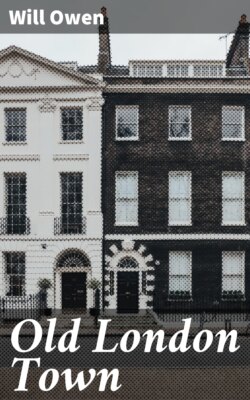Читать книгу Old London Town - Will Owen - Страница 6
На сайте Литреса книга снята с продажи.
ОглавлениеLondon Stone
Table of Contents
The fragment built into the face of St. Swithin's Church in Cannon Street, and so carefully protected by an iron grille that it is well-nigh invisible, is known as London Stone, and is believed to be a Roman milliarium or milestone, and to have marked the point in London whence all Roman roads radiated and distances were measured. Holinshed mentions Jack Cade striking his sword upon the stone after the storming of London Bridge and announcing himself lord of the city—as does Shakespeare in Henry VI.
The stone stood formerly on the south side of Cannon Street, and, as Sir John Fielding tells us, "it was fixed so very deep in the ground, and was so thoroughly fastened by bars of iron, that the most ponderous carriages could do it no injury." Something, however, seems to have been more successful than the ponderous carriages, as there is but a fragment left of the "great stone" described by John Stow.
Mr. Walter George Bell, in his interesting and informative Unknown London, is at some pains to cast doubt upon its Roman origin, as no mention of the stone appears before about 1200, and I think we may leave the verdict as one of "not proven."
St. Swithin's, the church that now affords sanctuary to the stone, was one of those destroyed by the Great Fire, and was rebuilt by Wren as we now see it.
Gogmagog.
Table of Contents
